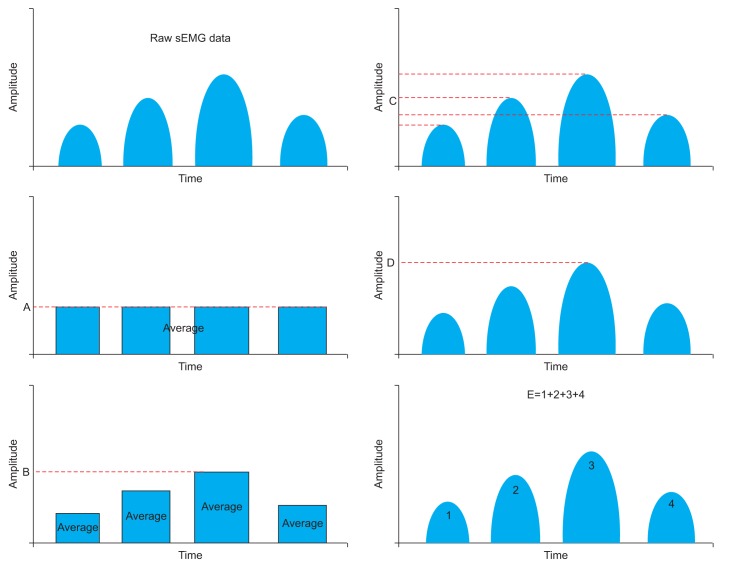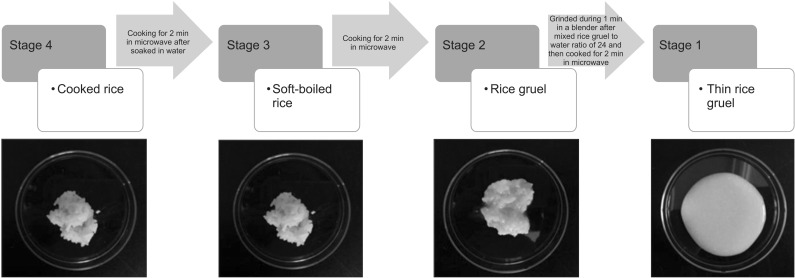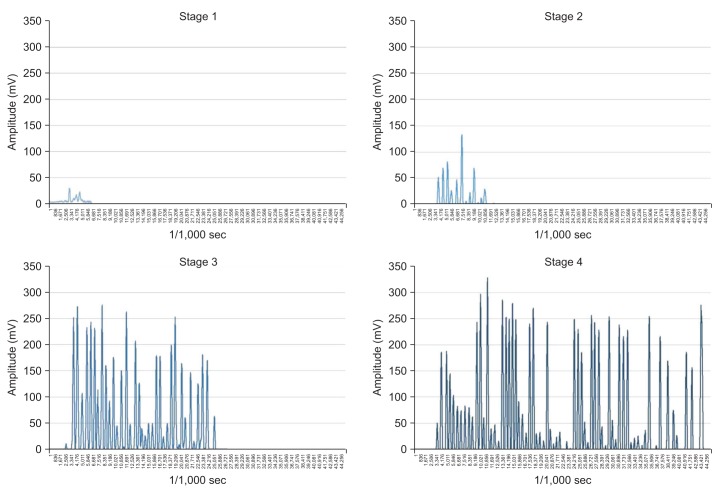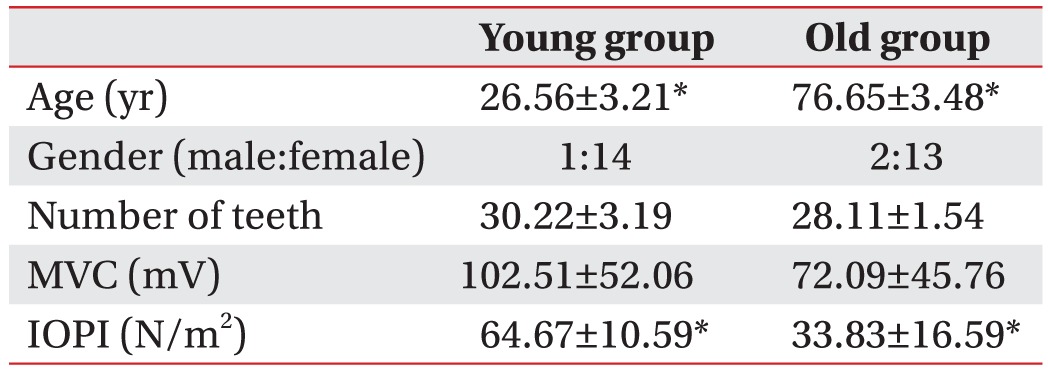1. Choi SJ. The family and ageing in Korea: a new concern and challenge. Ageing Soc. 1996; 16:1–25.

2. Locker D, Slade G. the oral health impact profile. J Can Dent Assoc. 1993; 59:830–833. 837–838. 844PMID:
8221283.
3. Miura H, Miura K, Mizugai H, Arai Y, Umenai T, Isogai E. Chewing ability and quality of life among the elderly residing in a rural community in Japan. J Oral Rehabil. 2000; 27:731–734. PMID:
10931271.

4. Ikebe K, Hazeyama T, Morii K, Matsuda K, Maeda Y, Nokubi T. Impact of masticatory performance on oral health-related quality of life for elderly Japanese. Int J Prosthodont. 2007; 20:478–485. PMID:
17944335.
5. Martin BJ, Corlew MM, Wood H, Olson D, Golopol LA, Wingo M, et al. The association of swallowing dysfunction and aspiration pneumonia. Dysphagia. 1994; 9:1–6. PMID:
8131418.

6. Mioche L, Bourdiol P, Peyron MA. Influence of age on mastication: effects on eating behaviour. Nutr Res Rev. 2004; 17:43–54. PMID:
19079914.

7. Peyron MA, Mishellany A, Woda A. Particle size distribution of food boluses after mastication of six natural foods. J Dent Res. 2004; 83:578–582. PMID:
15218050.

8. Mowlana F, Heath MR, Van der Bilt A, Van der Glas HW. Assessment of chewing efficiency: a comparison of particle size distribution determined using optical scanning and sieving of almonds. J Oral Rehabil. 1994; 21:545–551. PMID:
7996338.

9. Lucas PW, Luke DA, Voon FC, Chew CL, Ow R. Food breakdown patterns produced by human subjects possessing artificial and natural teeth. J Oral Rehabil. 1986; 13:205–214. PMID:
3458889.

10. Ishikawa Y, Watanabe I, Hayakawa I, Minakuchi S, Uchida T. Evaluations of masticatory performance of complete denture wearers using color-changeable chewing gum and other evaluating methods. J Med Dent Sci. 2007; 54:65–70. PMID:
19845137.
11. Tanimoto Y, Watanabe M, Kono R, Hirota C, Takasaki K, Kono K. Utility of color-changeable chewing gum to evaluate masticatory ability in communitydwelling elderly persons. Nihon Koshu Eisei Zasshi. 2009; 56:383–390. PMID:
19663266.
12. Ferrario VF, Sforza C, Zanotti G, Tartaglia GM. Maximal bite forces in healthy young adults as predicted by surface electromyography. J Dent. 2004; 32:451–457. PMID:
15240063.

13. Ferrario VF, Sforza C, Colombo A, Ciusa V. An electromyographic investigation of masticatory muscles symmetry in normo-occlusion subjects. J Oral Rehabil. 2000; 27:33–40. PMID:
10632841.

14. Kohyama K, Mioche L. Chewing behavior observed at different stages of mastication for six foods, studied by electromyography and jaw kinematics in young and elderly subjects. J Texture Stud. 2004; 35:395–414.

15. Kohyama K, Mioche L, Martin JF. Chewing patterns of various texture foods studied by electromyography in young and elderly populations. J Texture Stud. 2002; 33:269–283.

16. Peyron MA, Blanc O, Lund JP, Woda A. Influence of age on adaptability of human mastication. J Neurophysiol. 2004; 92:773–779. PMID:
15277595.

17. Lehman GJ, McGill SM. The importance of normalization in the interpretation of surface electromyography: a proof of principle. J Manipulative Physiol Ther. 1999; 22:444–446. PMID:
10519560.

18. Yang JF, Winter DA. Electromyographic amplitude normalization methods: improving their sensitivity as diagnostic tools in gait analysis. Arch Phys Med Rehabil. 1984; 65:517–521. PMID:
6477083.
19. Ekstrom RA, Soderberg GL, Donatelli RA. Normalization procedures using maximum voluntary isometric contractions for the serratus anterior and trapezius muscles during surface EMG analysis. J Electromyogr Kinesiol. 2005; 15:418–428. PMID:
15811612.

20. Kohyama K, Yamaguchi M, Kobori C, Nakayama Y, Hayakawa F, Sasaki T. Mastication effort estimated by electromyography for cooked rice of differing water content. Biosci Biotechnol Biochem. 2005; 69:1669–1676. PMID:
16195583.

21. Feldman RS, Kapur KK, Alman JE, Chauncey HH. Aging and mastication: changes in performance and in the swallowing threshold with natural dentition. J Am Geriatr Soc. 1980; 28:97–103. PMID:
7354209.

22. Ono T, Iwata H, Hori K, Tamine K, Kondoh J, Hamanaka S, et al. Evaluation of tongue-, jaw-, and swallowing-related muscle coordination during voluntarily triggered swallowing. Int J Prosthodont. 2009; 22:493–498. PMID:
20095201.
23. Hori K, Ono T, Nokubi T. Coordination of tongue pressure and jaw movement in mastication. J Dent Res. 2006; 85:187–191. PMID:
16434740.

24. Clark HM, Henson PA, Barber WD, Stierwalt JA, Sherrill M. Relationships among subjective and objective measures of tongue strength and oral phase swallowing impairments. Am J Speech Lang Pathol. 2003; 12:40–50. PMID:
12680812.










 PDF
PDF ePub
ePub Citation
Citation Print
Print





 XML Download
XML Download